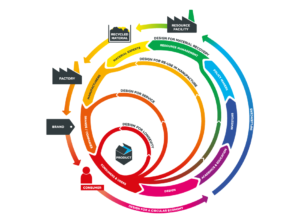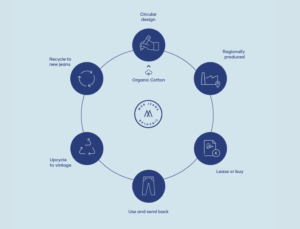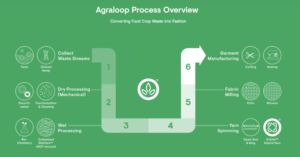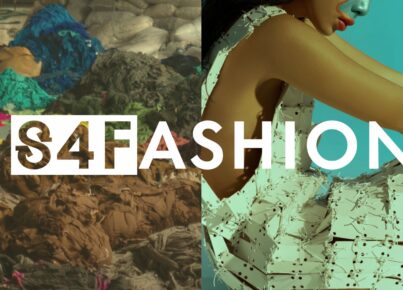According to the Ellen MacArthur Foundation, “the circular economy refers to an industrial economy that is restorative by intention; aims to rely on renewable energy; minimises, tracks and eliminates the use of toxic chemicals; and eradicates waste through careful design ”; being its main proposal to understand the operation and optimization of systems instead of their components.
A circular economy represents not only a paradigm shift in which waste is rebuilt into resources through reuse and recycling, but it is also about achieving a greater economic boost through efficiency in the use of resources and their industrial transformation . And although in recent decades many minds have been inspired by the questions posed by the circular economy, today these questions are being answered not only by the most environmentalist profiles but by the bulk of the population, from the European Commission (which has developed a plan on Circular Economy for the Year 2025), to large consultancies such as McKinsey (which has just published a report on the impacts of fashion on climate change) to financial institutions (ESG *) .
Video: The basic concept of circular economy, from Ellen MacArthur Foundation.
https://www.youtube.com/watch?v=zCRKvDyyHmI
However, to go from a linear economy based on the “make-use-throw” system to a restorative economy, it requires more than recovery or recycling of waste into new products through circular systems. In its project “The Great recovery”, the Royal Society of Arts (RSA) established a series of guidelines supposed to help design professionals to introduce regeneration as another design principle within their future products and services.

Image: RSA’s The Great Recovery project product and service design.
But to achieve a true paradigm shift we need to pay attention to the scale of these systems; to the biomaterials used in these models and to their sustainable regeneration; to the decarbonization of production systems and the implementation of renewable energies and above all, we must think about how these new economic models are contributing to local, regional and global social and environmental regeneration; and although it is true that we have not yet achieved it, we have undoubtedly set the path to get there. Not to every single product but to our lifestyle and humanness.
A clear example of this is the city of Amsterdam, which recently announced its Transition Plan “The Amsterdam city donut” for the year 2050, following the name given to these models almost a decade ago by the economist Kate Raworth. Among the companies leading this transition plan, it is not surprising to find one of the fashion pioneers in terms of bringing circularity to the fashion industry: Fashion for Good, a global platform for innovation, aiming to make all fashion good, sparking and scaling innovation and by doing so, bringing the whole industry together.
All these changes require a profound transformation of the companies’ value chain and if there is no doubt about one thing, is that each one of them will require a series of actions and efforts to carry them out. Brands such as Stella McCartney and Adidas are working collaboratively to create collections in which to explore and improve the qualities of materials based on the durability of the product, while making the production chain more transparent and traceable; MUD Jeans, a leading brand founded in the Netherlands incorporates a circular business model to produce its popular items. In addition to its high quality long lasting pieces designed from eco-friendly materials including GOTS certified organic and recycled cotton, customers can rent jeans, instead of buying them, and when they need a new pair, return them to MUD to be recycled into new denim and receive a discount on their next pair. Customers can even recycle other brands’ jeans as long as they are made from at least 96% of pure cotton. And The R Collective has taken it one step further with the launch of ‘Refashioned’, an on-demand service allowing customers to choose from a 20 piece collection and tailoring it to their size and preferred fabric. This model fully embodies slow and circular fashion where instead of producing mass amounts of clothing items that may not sell, the label is able to make the exact needed products to order, thus eliminating the potential waste!

Image: MUD jeans product life-cycle. From: www.mudjeans.eu
Companies that operate under a “closed-loop” model control the creation of their products, but are also responsible for their end of life, as well as their recovery and reuse. This has accelerated a transition that has long been forging in an increasingly liquid society: the shift from the consumption of products to the use of services, and all that this entails. Second-hand rental and sale systems (such as The RealReal, Vestiaire Collective, Ecodicta or Lamasmona); infrastructures for the correct collection of waste, separation and subsequent recycling (such as the Europeanproject ReHub led by Euratex, which will mean the creation of 5 textile recycling hubs in Europe); and digital technologies that allow better monitoring of resources, making radical transparency real.
In the field of materials, a new philosophy is nourishing: materials are created avoiding waste-generation and eliminating pollution, and extended durability and continuous improvement of the production process are creation drivers. One of the best representatives of this practices is Agraloop, from Circular Systems, an American company specialized in transforming food waste into innovative fibers for the fashion industry.

Image: Agraloop Process Overview from Waste Stream to garment manufacturing. From: www.agraloop.com
In the same line of action, although from a radically opposite perspective, we find an alternative to the industrial production of materials: regenerative organic agriculture. The change from an industrial production to these new, and at the same time ancestral, practices can contribute significantly to increasing the absorption of carbon by the soil, conserving water, restoring biodiversity and consequently, protecting animals and contributing to the economic stability of farmers, since through actions for gender equality, such as the payment of equal wages or indiscriminate access to education, the social and economic position of workers can improve. Undoubtedly, an attractive path that has already been undertaken by international companies such as The North face or Timberland, who in 2030 have set the goal of being 100% circular.
So, how can we really create the business models that make a real change? we all should take responsibility for the impacts our designs are doing while being produced or consumed. The first step in doing so is the realization that a business model should always be broader than just a product or a wish. Realizing that we humans should not aim to not making more damage, but to create more good comes next. Let’s dare to care, innovate!
By Blanca Gomara,
Sustainable Fashion Consultant











